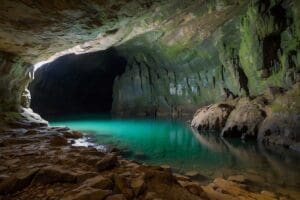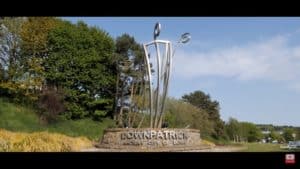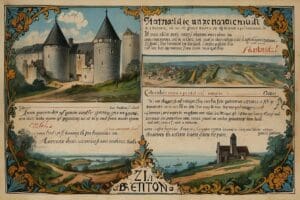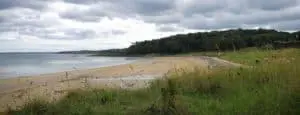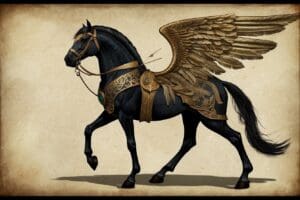Sacred Ground: Legends of Holy Sites of Ireland
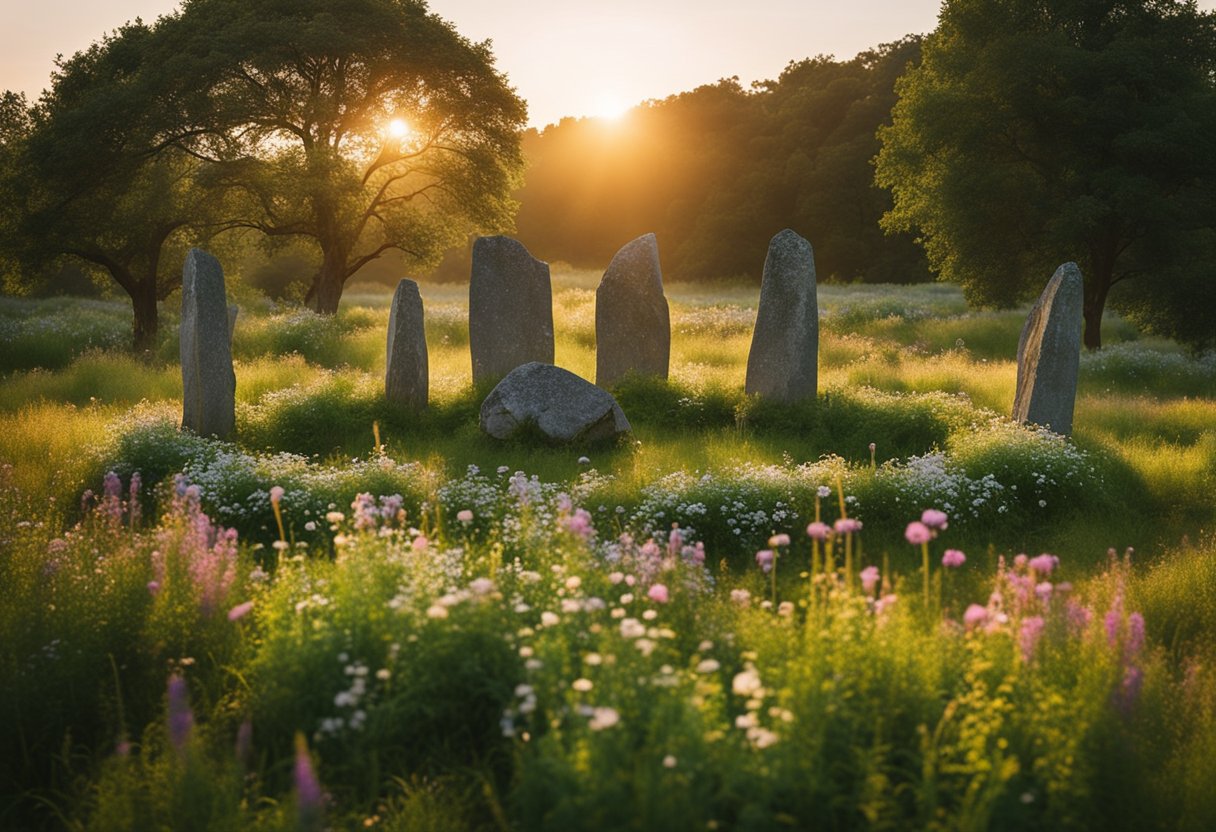
Updated On: April 24, 2024 by Maha Yassin
Ireland’s landscape is steeped in mystique and spirituality, cradling many sacred sites that whisper legends of a bygone era. Holy Sites of Ireland is an intricate tapestry of nature and the divine; each threaded with stories from pagan roots to Christian influences. From the ceremonial stone circles to ancient monastic ruins, these sites offer a window into the spiritual lifeblood of Irish culture and heritage.
Throughout the ages, Irish sacred sites have served as pilgrimage points and custodians of a rich cultural legacy. The collective reverence for these places has safeguarded their narratives, allowing us to unravel the connection between Celtic festivals, seasonal gatherings, and the landscape’s geometry. These sites continue to captivate us with tales of healing, miracles, and the sacred flora that blooms amidst Ireland’s hallowed groves.
Holy Sites of Ireland
Through our exploration, we aim to illuminate the historical and archaeological importance of Ireland’s hallowed grounds and the serene natural sanctuaries essential to the country’s character as its lore.
Historical and Archaeological Significance
Ireland is a tapestry of ancient narratives woven into its very soil. Our verdant lands safeguard the legacies and myths of ancient Ireland, offering an archaeological richness that competes with the world’s most treasured locations. Sites like the Hill of Tara serve as silent sentinels of our past and as portals to a time when the High Kings ruled and mysticism intertwined with everyday life. These landscapes, dotted with Neolithic tombs and Celtic monuments, are proof of a once powerful and deeply spiritual civilisation.
Ireland’s Natural Sanctuaries
Amidst our rolling green hills, lakes, and rugged coastlines lay pockets of untouched beauty – our natural sanctuaries. Places like Lough Gur resonate with the essence of Ireland’s natural beauty, nestled in myths and wrapped in the quiet reverence of natural landscapes. The Grange Stone Circle, harmoniously aligned with the movements of celestial bodies, highlights the intertwining of the practical, the spiritual, and the natural world, reflecting an age-old bond between our ancestors and the land. These sanctuaries, free from the touch of modernity, offer a haven to reflect and find a connection to the earth as perennial as the sky above.
Pagan Roots and Christian Influences
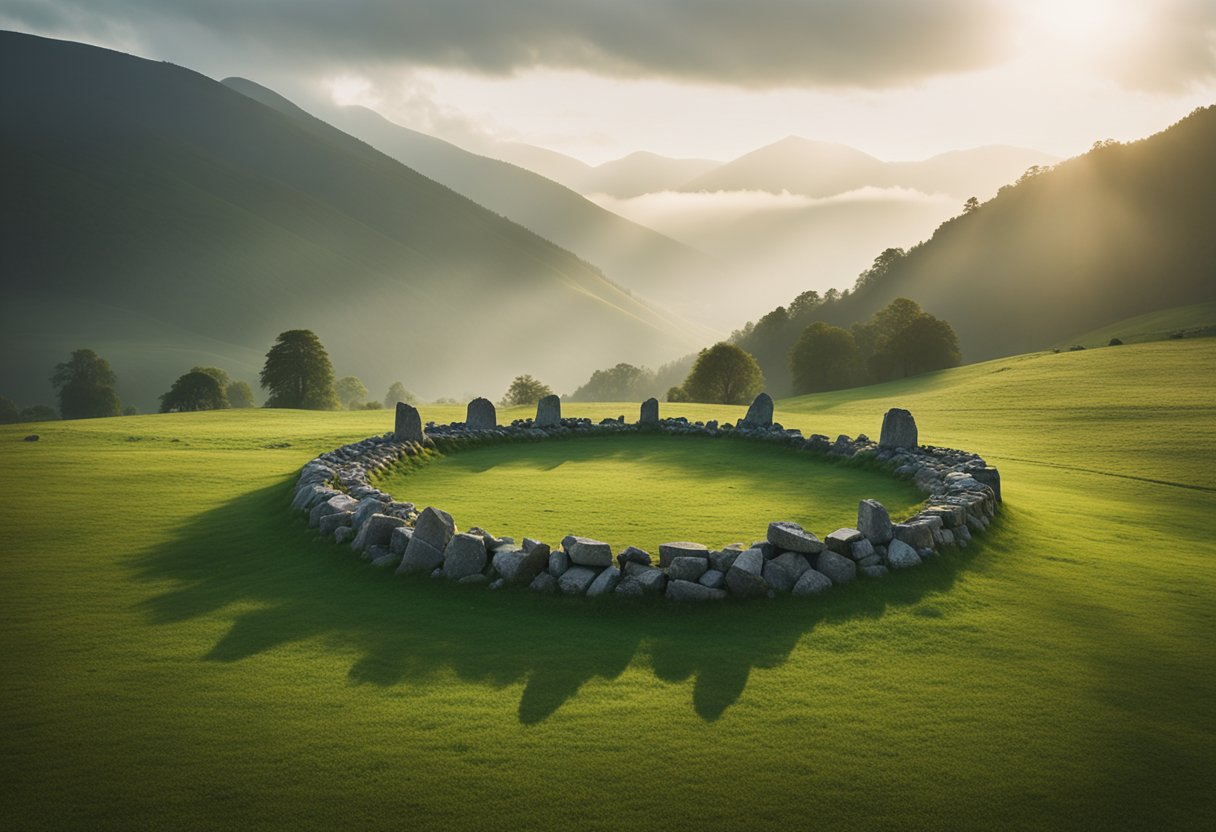
In exploring the Holy Sites of Ireland, we uncover a rich tapestry woven with the threads of pre-Christian traditions and reshaped by the arrival of Christianity. This interlacing narrative reveals a deep syncretism, where pagan practices were often reinterpreted through a Christian lens, leading to periods of significant religious reform.
Pre-Christian Traditions
Before the spread of Christianity, Ireland was a land of intricate pagan rituals and omens. A key figure among the pre-Christian entities was the Dagda, a god of abundance and wisdom, symbolic of the country’s rich mythological heritage. Sites like the ancient holy wells were considered sacred, and their waters were believed to hold healing powers and the ability to divine the future.
The Arrival of Christianity
St Patrick, a name synonymous with the Christianisation of Ireland, is often celebrated for introducing Christian practices to a predominantly pagan society. His mission in the 5th century marked a pivotal turn as the Christian faith began to spread across the island, promising a new dawn that would reshape the spiritual landscape.
Syncretism and Reform
Fusing pagan beliefs with Christian teachings led to a unique religious expression. Saints and holy figures were integrated into local lore, often at places originally revered in pre-Christian times. Through subsequent reforms, such as the movements in the 12th century, Ireland’s religious identity was continually reforged, striving to balance deep-rooted pagan pasts with its evolving Christian future.
In traversing the verdant land of Ireland, our understanding of these sacred sites is enriched by the stories of their past—stories that echo the enduring legacy of Ireland’s spiritual journey.
Holy Sites of Ireland and Their Cultural Legacy
Ireland’s landscape has numerous sacred sites steeped in history and spiritual significance. These places offer us a window into the past, reflecting a blend of pagan and Christian traditions shaped over millennia.
Sacred Mountains and Wells
Croagh Patrick, known as the holy mountain, is a testament to faith and penance among the revered sites. Every year, thousands of pilgrims ascend its heights, some barefoot, in a tradition that honours St Patrick’s legendary fast on its summit.
Holy wells, marked by the age-old custom of tying clooties and the practice of prayer, are scattered throughout Ireland, embodying living traditions linking to the natural world. For instance, many wells are visited for their reputed healing properties, and rituals are performed, reflecting a continuity of ancient customs passed through generations.
Ancient Churches and Monasteries
Ireland’s ancient churches, such as those on the revered site of Glendalough, speak of a monastic life once central to Irish Christianity. The remains of these structures, alongside high crosses and round towers within these monastic cities, often share grounds with ancient graveyards, offering insight into early religious practices.
The ruined monasteries are landmarks of cultural endurance, where monks would have prayed and preserved learning during the Dark Ages. Their presence throughout the Irish countryside is a stark reminder of the deep spiritual roots that continue to influence Irish identity and heritage.
By acknowledging these sacred places, we gain a deeper understanding of the cultural legacy built upon our ancestors’ spiritual practices.
Celtic Festivals and Seasonal Gatherings

In the tapestry of Irish tradition, festivals and seasonal gatherings are significant, marking the year’s cycle with deep-rooted cultural practices.
Samhain and Lughnasa
Samhain, held on 1 November, ushers in the darker half of the year. It’s believed to be when the veil between our world and the spirit world is thinnest. This date is also considered the Celtic New Year and is celebrated with bonfires, feasting, and rituals meant to protect in the coming winter. People might visit the Holy Sites of Ireland to honour this occasion.
Lughnasa, typically celebrated on 1 August, is informed by the agrarian cycle, heralding the beginning of the harvest season. It’s named after the Celtic god Lugh, known for his skills as a craftsman and warrior—attributes honoured during this time. Games, matchmaking, and visits to well-known hills or sacred sites are emblematic of this festival.
St. Patrick’s Day
St. Patrick’s Day, occurring on 17 March is a global symbol of Irish culture, but it’s deeply interwoven with the country’s history and religious roots. While not a traditional Celtic festival, it has been adopted by the Irish as a time of celebration. Parades, wearing green, and themed music and food define this day, commemorating Saint Patrick, one of Ireland’s patron saints, credited with bringing Christianity to the island.
Rituals and Practices of Irish Pilgrimage
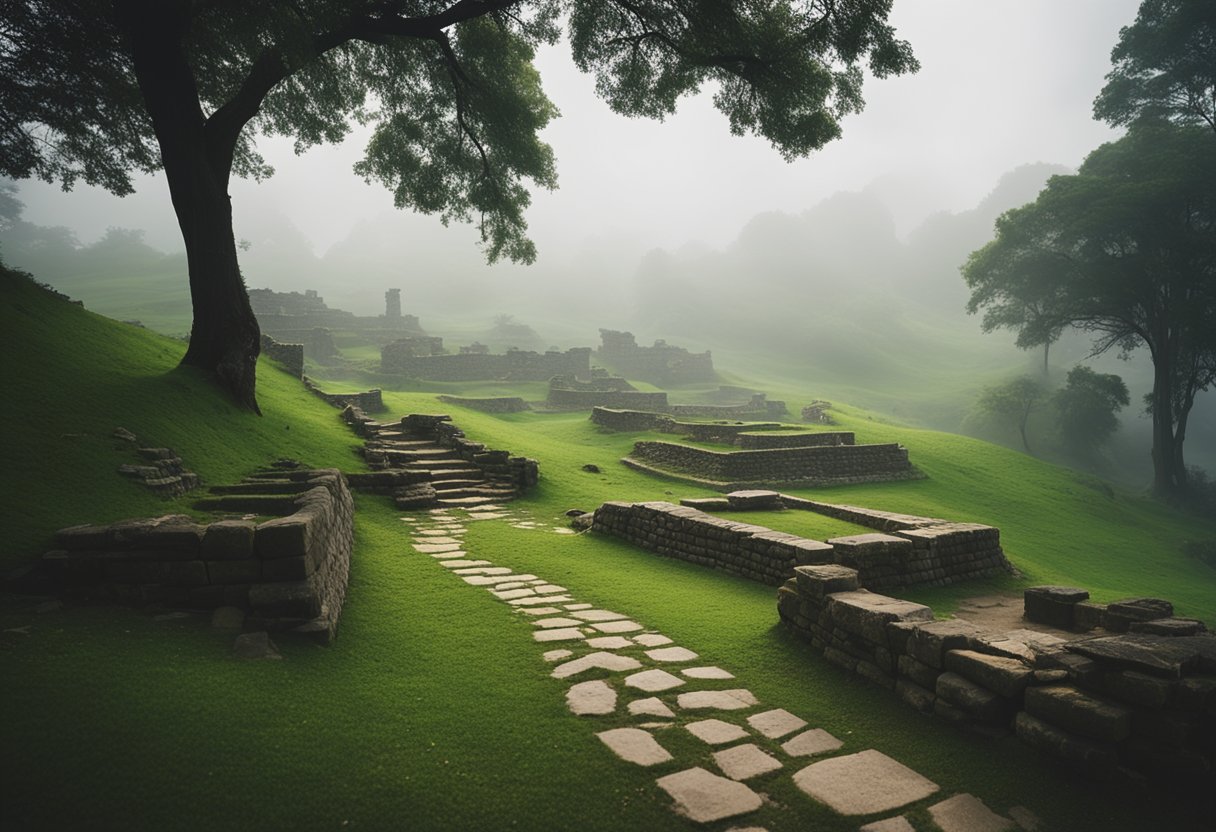
In exploring the rituals and practices of Irish pilgrimage, we uncover a tradition steeped in spirituality and communal experience. Our journey delves into the dedicated paths pilgrims tread and the ceremonial acts they perform in pursuit of spiritual fulfilment.
The Journey of Pilgrims
As we trace the paths of Irish pilgrims, we observe an enduring commitment to historical routes ingrained with cultural significance. Routes like the ancient Tochar Phadraig provide a tangible link to the past, uniting generations in a common spiritual pursuit. The journey often involves a series of ‘stations’, specific sacred spots where pilgrims pause to engage in prayer, reflection, or the rites of the pilgrimage.
- Stations: Designated points along pilgrimage routes where specific prayers and reflective practices are undertaken.
- Preparation: Mental and physical readiness, often involving fasting or silent contemplation, before embarking on the sacred journey.
Rites and Ceremonial Activities
Within ceremonial activities, pilgrims engage in various practices that deepen their connection to the divine. These rites, from lighting candles to drawing water from holy wells, are performed with reverence and carry many meanings. At sites like Croagh Patrick, the ‘Reek Sunday’ pilgrimage exemplifies this, where pilgrims climb the mountain in penance, often barefoot, embracing the pain for spiritual gain.
- Circle Rituals: Movements around sacred objects or places in a circular manner to honour and invoke spiritual presence.
- Votive Offerings: Leaving behind items of personal significance or tokens of prayer at stations or holy sites.
We’ve glimpsed the rich tapestry of Ireland’s spiritual heritage through our shared narrative. Pilgrims continue to walk these time-honoured paths, partaking in rituals that weave together the physical and the metaphysical, grounding their faith in the landscape of Ireland’s holy sites.
Healing and Miracles in Irish Faith
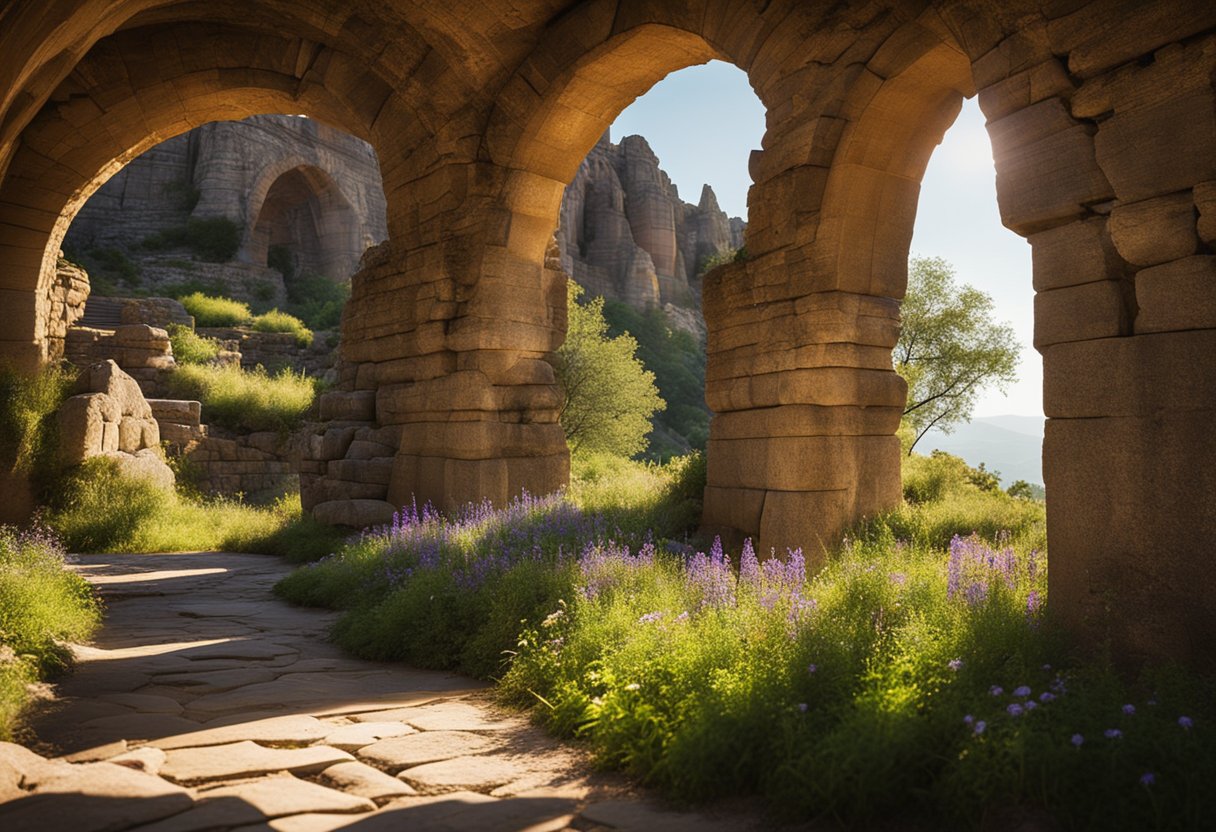
In the tapestry of Irish faith, healing and miracles are intimately woven with the natural landscape and the veneration of saints. Rich and dynamic traditions continue to draw people seeking solace and the curative touch of sacred sites.
Holy Wells and Their Miraculous Waters
We find the essence of Ireland’s spiritual heritage encapsulated within its holy wells, each a portal to ancient healing traditions. Many such wells are believed to possess miraculous waters that offer cures for various ailments when approached with belief and reverence. Often crystal clear, the water is sometimes connected with local saints, embodying the merging of Celtic and Christian traditions. For example, the well at Ballintubber Abbey is said to have been founded by Saint Patrick, marking it as a site of pilgrimage and reflection.
- St. Brigid’s Well, Co. Kildare: Associated with cures for eye problems and often adorned with holly.
- St. Declan’s Well, Ardmore: Linked with healing miracles and said to contain ash from the saint’s embers.
Saints and Their Healing Powers
The tales of Irish saints brim with accounts of healing and benevolent miracles. Through their devotion, these saints have left an indelible mark on the landscape—literally and metaphorically. Saint Patrick, Ireland’s patron saint, is credited with miraculous healings and the banishment of snakes, while lesser-known saints have affiliations with specific forms of healing.
- Saint Brigid: Renowned for her healing powers, her cross, woven from rushes, is thought to protect homes from harm.
- Saint Dymphna: Invoked for her intercession in mental health matters, surrounded by tales of miraculous cures for those afflicted with mental illness.
Irish faith, imbued with tales of saints and sacred water, continues to draw those searching for healing and miracles, embodying the resilience and mystique that indelibly define Ireland’s spiritual essence.
Sacred Flora of the Emerald Isle
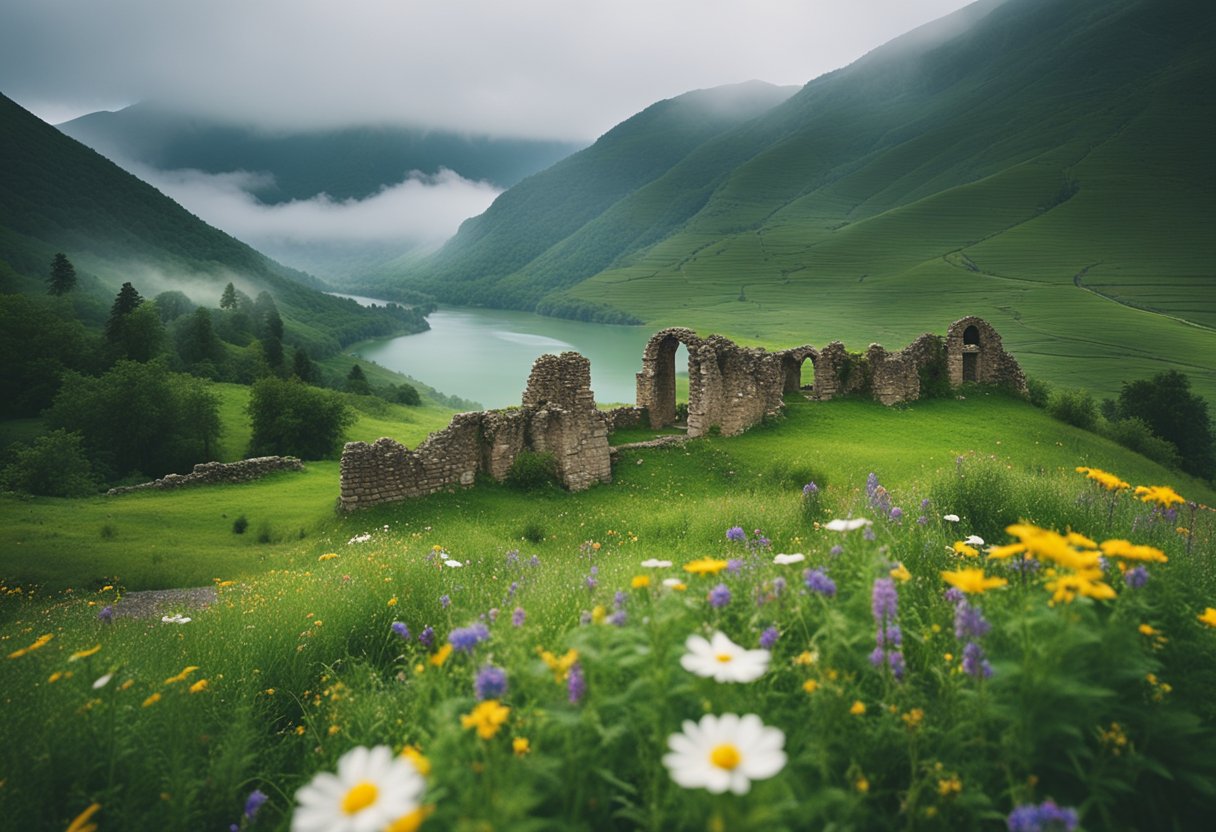
Ireland’s holy sites are not just about stone crosses and ancient chapels; they’re also wrapped in a wealth of plant lore, where certain trees and herbs hold profound spiritual significance.
Sacred Trees and Their Symbolism
The holy sites of Ireland are often entwined with sacred trees, rooted deeply in the soil as they are in mythology. The hawthorn, for instance, is considered a fairy tree, with many believing that its presence indicates a portal to the otherworld and, thus, is often found growing near sacred sites. It is still customary not to disturb or cut down a hawthorn for fear of attracting bad luck.
- Oak trees symbolise strength and endurance, sacred to the druids, who saw them as vessels of cosmic energy and ancient wisdom.
- With its evergreen leaves and sharp edges, Holly often stands for protection and overcoming adversity, as in old tales and songs.
- The ash, revered for its connections to divinity and enchantment, features prominently in Irish folklore, with many staffs and wands purportedly made of its wood.
The Significance of Irish Herbal Lore
Herbal lore is crucial in Ireland’s cultural fabric, intertwined with the natural landscapes of the Emerald Isle. Remedies derived from local herbs have been practised and preserved through generations, and their recipes are cloaked in mystery and tradition.
- In monastic sites, monks cultivated herbs not only for healing but also as a means of exploring nature’s connection to the divine.
- Bunches of herbs, such as St. John’s Wort or vervain, were often hung on doors to ward off evil or used in rituals to bless sacred sites.
By fostering a deeper understanding of this rich botanical heritage, we maintain a living link to our past, preserving the wisdom handed down through the ages.
The Role of Language and Folklore
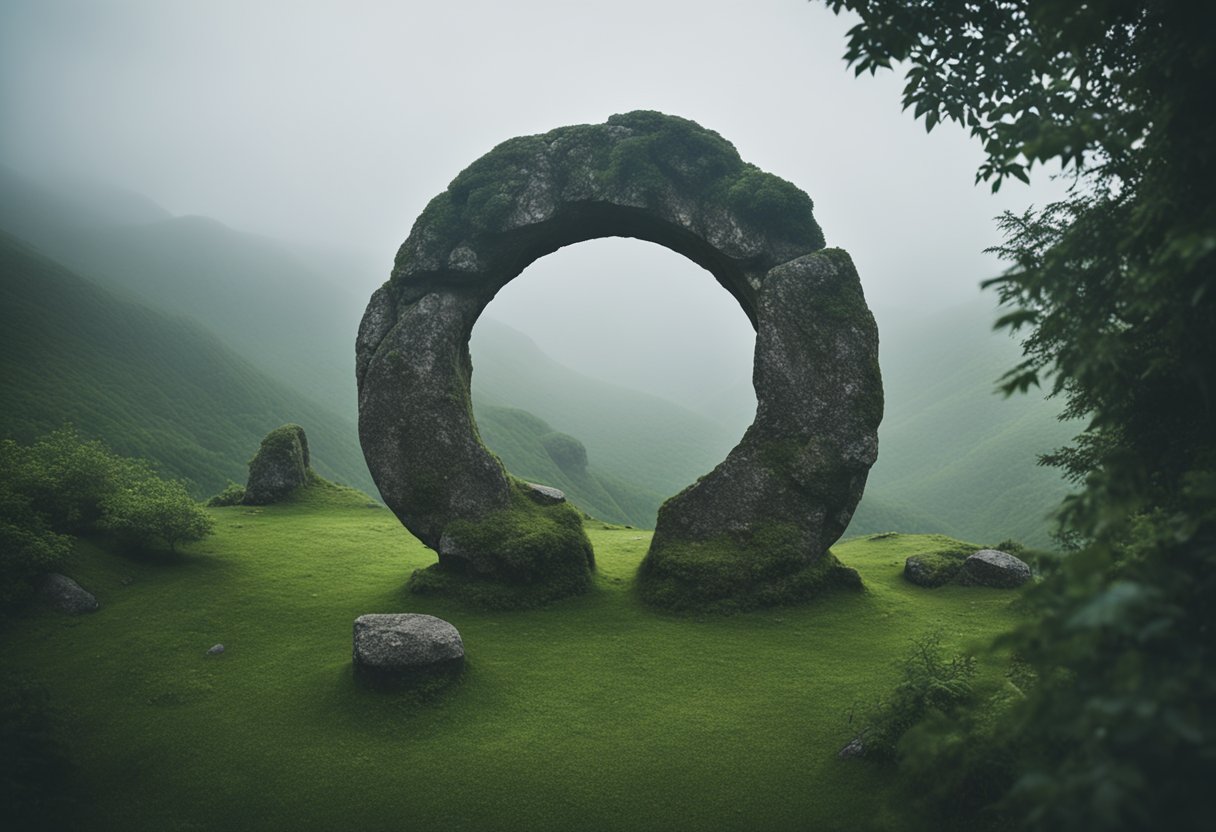
Language and folklore are the vehicles through which the rich tapestry of Irish holy sites and their associated legends have been conveyed through generations. They are not just means of communication but repositories of culture and spirituality.
Irish Language and Sacred Terms
The Irish language, with its own set of sacred terms and expressions, has been a fundamental element in chronicling the sanctity of Irish holy sites. Many of these places have names deeply rooted in Gaelic, reflecting their significance and the beliefs surrounding them. For example, ‘lios’ translates to ‘fort’ but often refers to fairy forts, indicating a protective and enchanted space. Similarly, ‘bile’ refers to sacred trees central to worship and legal proceedings in ancient Ireland.
Legends and Myths Preserved in Stories
The power of storytelling in Ireland has preserved countless myths and legends, highlighting the importance of holy sites. These stories, laden with moral and mystical dimensions, have been passed down through the folklore tradition. The legends of saints who interacted with the natural world, imbuing certain locations with divine significance, are still recounted today. For instance, the tale of St. Patrick banishing snakes from Ireland contributes to the sacred character of places like Croagh Patrick.
Sacred Geometry and Ireland’s Landscape
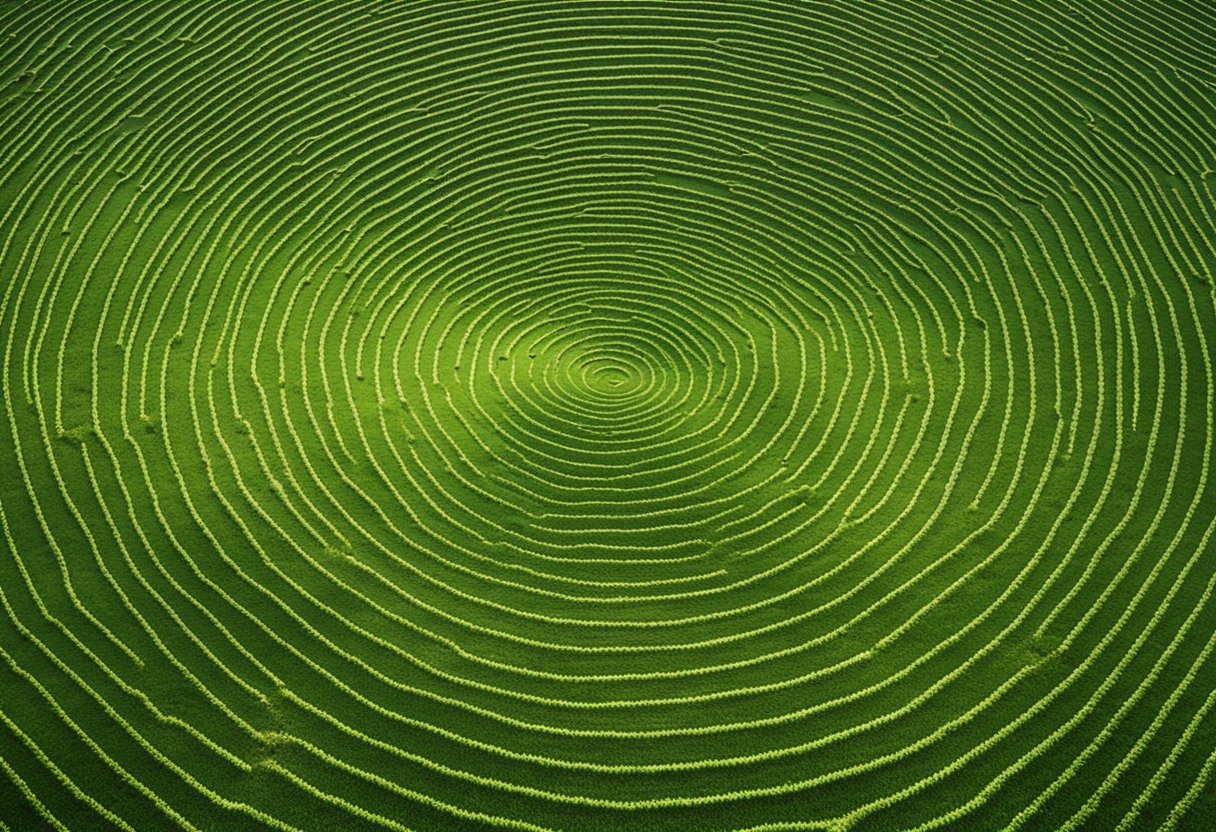
Exploring the sacred geometry of Ireland’s landscape reveals the profound connections between ancient spirituality and the natural world. Irish holy sites were often constructed with precise alignments to celestial events, revealing a deep understanding of geometry and astronomy.
Circular Patterns in Sacred Design
Our ancient ancestors had a penchant for integrating the circle into their sacred sites. The circular design is aesthetically pleasing and carries significant symbolic weight, representing unity and eternity. For instance, the stone circles scattered across Ireland are thought to have played a role in ceremonial practices. One of the most renowned is the imposing circle at Newgrange, a large prehistoric passage tomb believed to be older than Stonehenge and the Egyptian pyramids.
- Circular design significance: Symbol of unity, wholeness, and life cycle.
Newgrange is especially noteworthy for its intricate spiral designs that adorn the entrance stone, linking the geometric prowess of its creators with a profound understanding of sacred geometry.
The Alignment of Sacred Sites with Astronomy
The alignment of Irish sacred sites with astronomical events is remarkable. Newgrange is a testament to this connection, with its main passageway meticulously aligned to capture the winter solstice sun. As the sun rises on the shortest day of the year, it shines through the ‘roof-box’, illuminating the inner chamber in a breathtaking spectacle of light and shadow.
- Astronomical event: Winter Solstice – around 21 December.
- Alignment outcome: Illumination of Newgrange’s inner chamber.
This astronomical alignment suggests that our ancestors were skilled builders and keen observers of the heavens, integrating their knowledge of the sun’s path into the sacred geometry that underlies Ireland’s spiritual landscape.
Protection and Preservation of Holy Sites
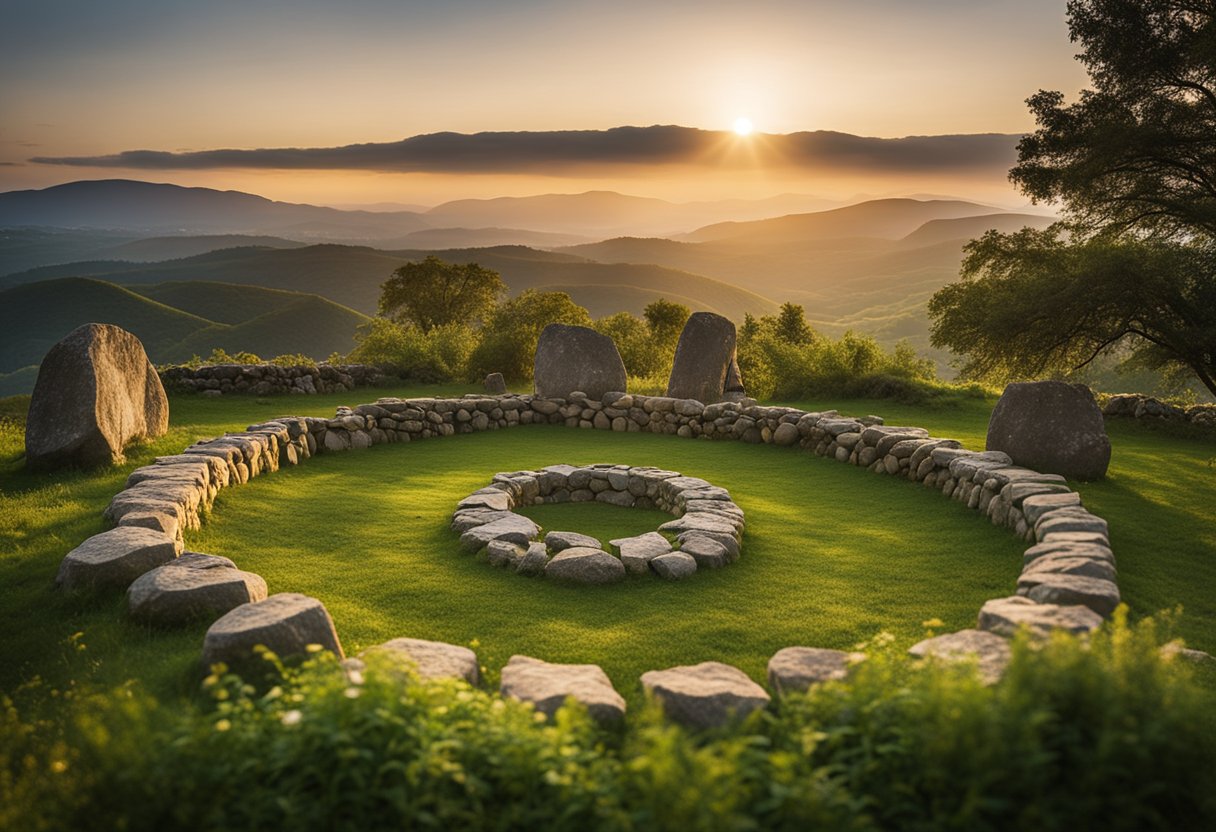
Holy sites in Ireland, often brimming with cultural and spiritual significance, face the ongoing challenge of preservation while accommodating public access. We focus on exploring what is being done to conserve these landscapes and the legal scaffolding underpinning their protection.
Modern Conservation Efforts
Efforts to conserve holy sites involve a multidisciplinary approach, combining archaeology with community initiatives. Organisations work to safeguard these sites’ physical integrity while preserving their intangible cultural heritage. For example, mapping Ireland’s hidden heritage is key to understanding the extent and variety of holy wells, fostering respect and local stewardship.
- Priorities in Conservation:
- Physical integrity of structures and natural features
- Intangible heritage (traditions and spiritual value)
- Educational outreach and community involvement
- Methods used:
- State-funded projects for maintenance and restoration
- Use of non-invasive and environmentally sustainable techniques
- Collaboration with local communities for monitoring and upkeep
Legal Status and Public Access
The legal protection afforded to sacred places is rooted in a complex weave of national policies and international guidelines. While the Universal Code of Conduct on Holy Sites offers a framework for global standards, sites like Ireland’s holy wells often depend on national legislation. Issues of public access balance the need for engagement with protecting sensitive areas.
- Legal Frameworks:
- Public Access Considerations:
- Signposted pathways to minimise environmental impact
- Visitor information to educate on the site’s significance and preservation
- Volunteer programs to support ongoing maintenance and surveillance
We aim to foster a deep appreciation of these sacred grounds, ensuring they endure for generations while remaining accessible and meaningful to all seeking solace and history.
Frequently Asked Questions
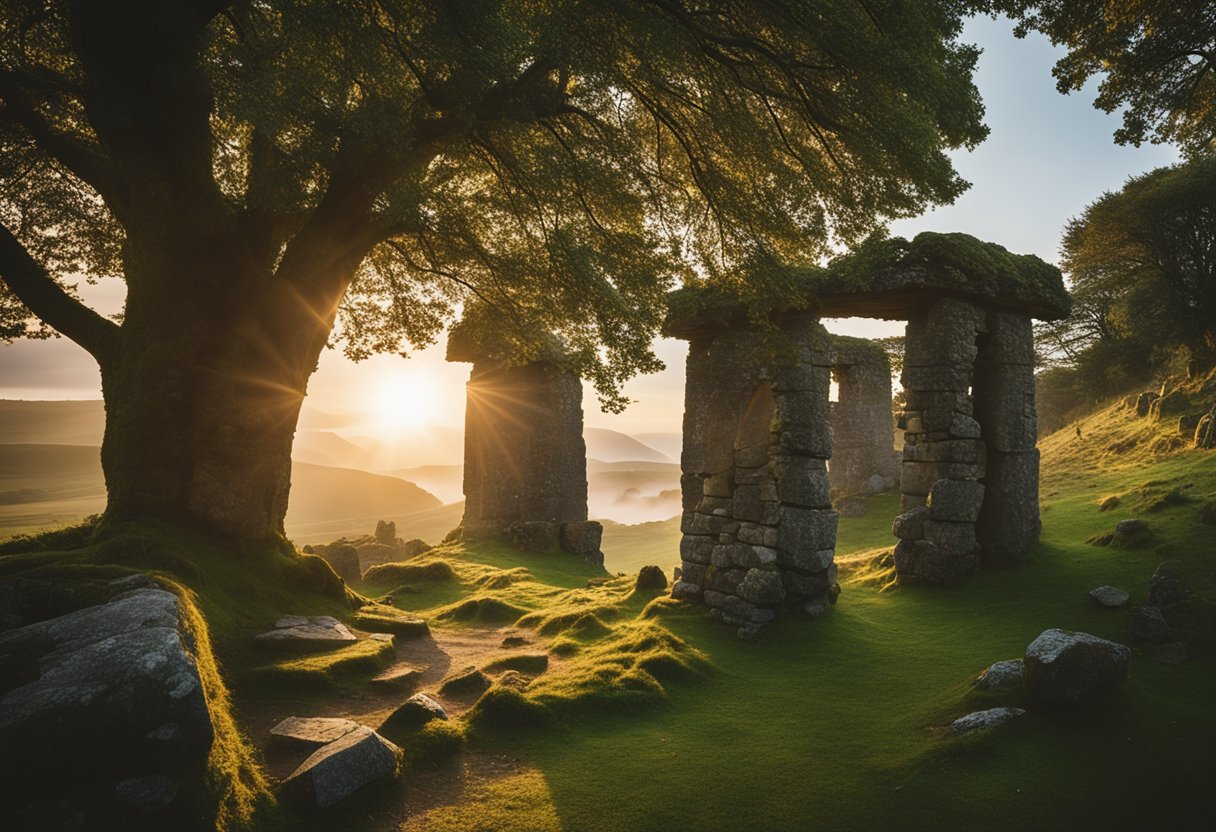
We’ve compiled a list of common enquiries about Ireland’s mystical holy sites and their profound historical significance.
What are the notable ancient Celtic sites to visit in Ireland?
Ireland is home to numerous ancient Celtic sites steeped in history and myth. Sites like the Hill of Tara, once the seat of the High Kings of Ireland, and the megalithic tomb complex at Brú na Bóinne are essential visits for anyone interested in ancient Celtic history.
Which locations in Ireland are considered to hold significant spiritual energy?
Many of Ireland’s natural landscapes, such as the holy wells, mountains, and caves, are imbued with spiritual significance. For instance, with its monastic ruins, the serene and spiritually charged Glendalough attracts pilgrims and those seeking reflection amidst its peaceful nature.
How can one understand the historical meaning behind Ireland’s holy sites?
Engaging with local guides or participating in educational tours is beneficial for grasping the full historical context of Ireland’s holy sites. Exploring informational resources like the article on Ireland’s sacred landscape can also provide valuable insights into the blend of Christian and pre-Christian significances.
Can you provide a guide to the most important Druid sites in Ireland?
We can recommend visiting the Hill of Uisneach, a ceremonial site believed to have been used by Druids for gatherings and festivals. Additionally, the Beara Peninsula in County Cork is said to have numerous stone circles and megalithic sites associated with Druid practices.
What burial grounds in Ireland are associated with the Tuatha Dé Danann?
The Tuatha Dé Danann, part of Irish mythology, is said to be associated with several megalithic sites. One renowned example is the burial mound at Newgrange, part of the Brú na Bóinne complex, which predates Stonehenge and the Egyptian pyramids.
Where might one find a comprehensive map of Ireland’s sacred sites?
A detailed map of Ireland’s sacred sites can be invaluable for visitors. Websites dedicated to Irish heritage and culture, such as Our Irish Heritage, often provide resources or links to help locate these significant landmarks.


